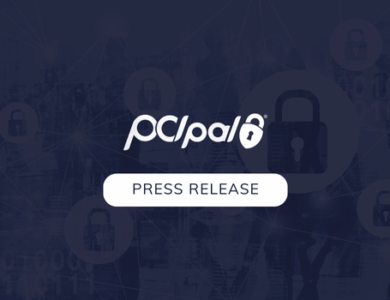In 2014, “Hey Siri” began to be heard around the world.
Apple’s voice assistant was not alone; Amazon’s Alexa and Google Assistant were soon making noise in the marketplace. A decade on and the voice assistant market is expected to grow by 30 percent from 2023 to 2033.
The use of this technology crosses geographies, status and demographics with people using it to improve accessibility, provide companionship and for convenience.
Voice technology is ubiquitous and now that it’s entered the payments landscape, contact centers need to be all-ears.
“Hey Siri”, “Alexa”, “Hey Google”
Over half of people use speech technology daily—to set alarms, open and close blinds, boil the kettle, check the time in different countries and complete many other tasks. As long as you’re in earshot, you don’t even need to be in the same room as the object or assistant for it to work.
For the one billion disabled people around the world, speech technology is having a powerful impact on improving their quality of life.
For example, Voiceitt is specifically designed to enable people with speech impairments to use voice technology. Samsung’s Bixby Vision helps the visually impaired know what’s in front of them, and SIGNS uses machine learning to translate between sign language and voice assistant technology.
The point is that voice technology is ingrained in consumers’ lives. So when it comes to making a purchase, a lot of your customers will want to use their voice instead of entering card details using DTMF keys on their phone. Indeed, it’s already most customers’ preference.
Trust your voice
As good as Siri and Alexa are at telling you the weather, their usage has limits. Although it is possible to buy products through a voice assistant, 45 percent of consumers aren’t comfortable doing so. In fact, it’s this discomfort barrier that allegedly saw Apple abandon plans to have users purchase services through Siri.
Trust is a barrier that contact center providers can overcome with the right solution.
Speak to Pay is a speech recognition solution that is entirely secure and fully PCI DSS compliant. Customers enter their payment details by speaking them and those spoken details are then converted into the data required. The agent can’t hear the details provided, but they can track the transaction to check that it’s progressing smoothly and then speak to the customer once the payment has gone through.
It is secure and bookended by human interaction, meaning customers are supported throughout the payment.
A gap in the market
Another barrier for voice assistants is the buying journey. Consumers are hesitant to buy products using voice assistants because we like to research and compare prices before we make a purchase—something that is best done manually.
But completing a payment through a contact center using voice technology, like Speak to Pay, is a different experience. It is the final stage of a purchasing journey—the research is complete, and the product or service has been decided upon. All that’s left to do is pay.
Since customers just need their voice to pay, Speak to Pay offers an unparalleled level of convenience with payments made possible on the go, in the car or wherever the customer may be. And for your customers in the disabled community, it means anyone with a visual impairment or physical disorder can easily complete their payment.
Let me speak
The popularity of AI-powered, natural language speech recognition is only going to increase, especially as further advancements are made in the accessibility of these tools. Indeed, voice payment cards are already on the rise.
If speech truly is the future of payment technology, make sure you’re on the right side of history and adopt this technology now. Your customers will thank you.










